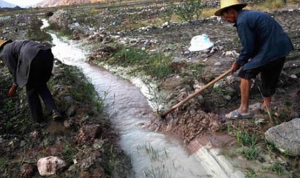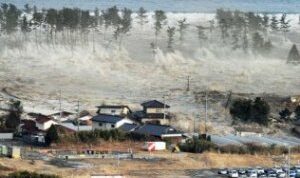 Louisiana Gov. Bobby Jindal held a news conference this morning to announce the U.S. Army Corps of Engineers has requested the opening of the floodgates of the Morganza Spillway, which will allow water from the Mississippi to flood farms and residential areas in the Atchafalaya Basin.
Louisiana Gov. Bobby Jindal held a news conference this morning to announce the U.S. Army Corps of Engineers has requested the opening of the floodgates of the Morganza Spillway, which will allow water from the Mississippi to flood farms and residential areas in the Atchafalaya Basin.
This controlled flooding will hopefully spare more heavily-populated areas like New Orleans and the state’s capital of Baton Rouge from receiving too much damage.
The news comes on the heels of reports from Memphis, Tenn., on Monday that the river was approaching near-record levels. On Tuesday, the water was measured at 47.85 feet, just short of the 1937 record of 48.7 feet. Experts are now saying they believe the river might have reached its highest crest in that area, sparing tourist attractions like Graceland from harm. However, the director of the Shelby County Office of Preparedness has admitted that while they believe the water levels to have stabilized, the situation is not completely predictable and other factors could cause the river to continue to rise despite early indications that it has reached its peak.
Although residents in Memphis and surrounding areas can possibly look forward to watching the flood waters recede, Louisiana’s residents have yet to see what havoc the swollen river will bring to their shores. The decision to flood some areas of the state to spare others heavier damage was not undertaken lightly. The Morganza Spillway floodgates were last opened in 1973, and the request by the Army Corps of Engineers to open it once again is a move designed to try to relieve pressure on the state’s overburdened levee system caused by the near-record amounts of water being moved along the river’s route at the moment.
Meanwhile, the flood damage already caused by the river is reviving a decades-old debate about the cost of rebuilding and compensating residents for the loss of homes and farms in high-risk areas. Some are pushing for a harder look at regulations surrounding building on these areas, as multiple counties in Tennessee and other states have already been declared disaster zones by President Barack Obama, which makes them eligible for federal aid. Critics have pointed to the estimated $709 million in taxpayer dollars that the government settled in response to flood claims by both residents and business owners in 2010 alone, as indicative that initiatives like the National Flood Insurance Program need to be revised.




